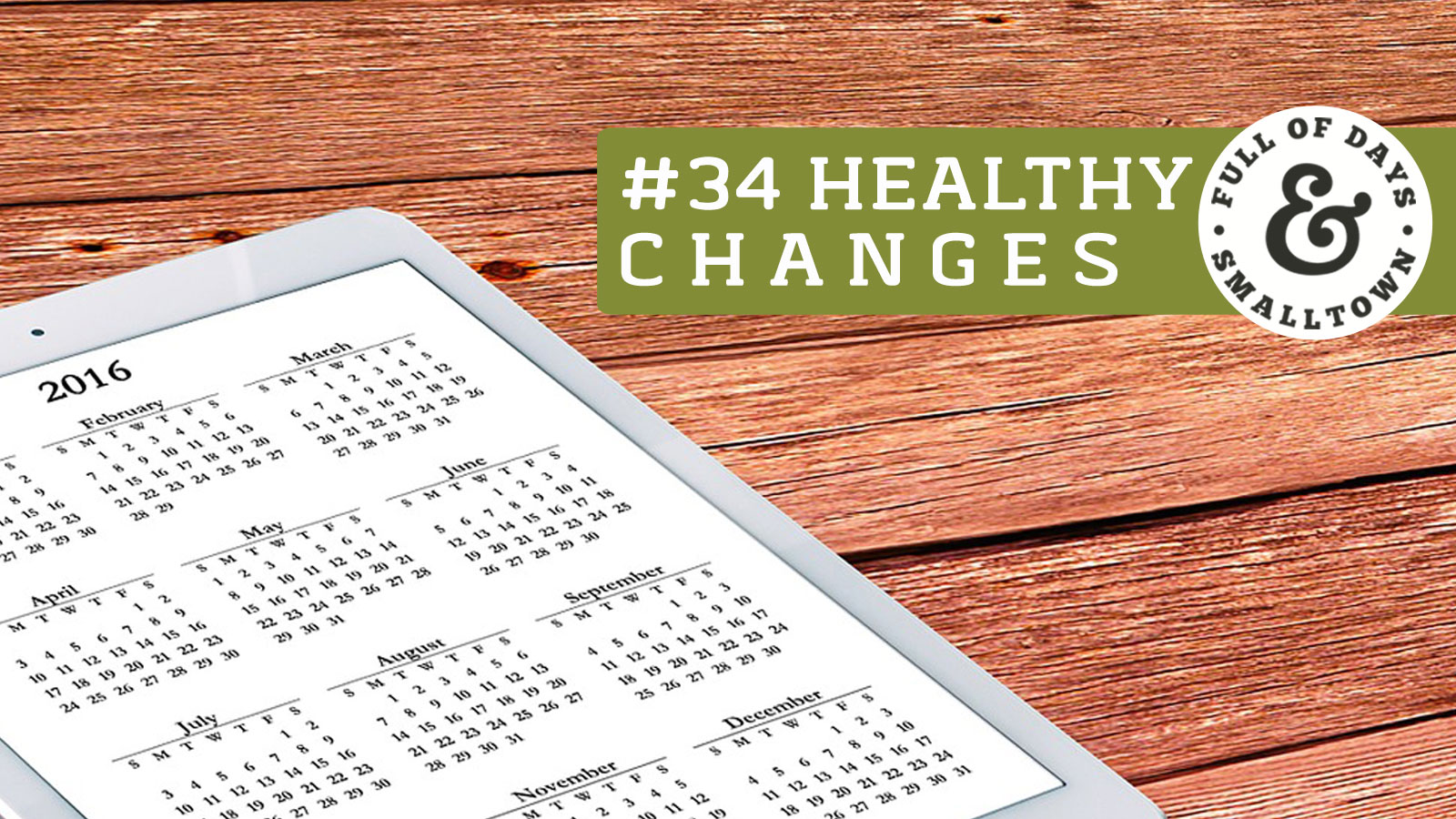
f I’ve said it once, I’ve said it a thousand times. Meal planning will save you money and help you stick to a healthy, traditional foods lifestyle. It really is that simple!
But I completely understand that simple doesn’t equate to easy. How do we make a meal plan when we’re just figuring out what a traditional diet even means? Hopefully Healthy Change #33 helped simplify the allowable foods in a traditional diet. Sometimes “KISS” really is a helpful acronym – Keep It Simple Sister!
If you’ve never meal planned before, you may quickly find yourself overwhelmed and calling in for pizza. But meal planning doesn’t have to be so hard, or cost half your grocery budget for a pre-made plan. Trust me, I’ve paid for meal plans that worked wonders for those selling them, but they didn’t fit our life or taste preferences. When planning out your meals there are a few basic questions to answer that will help get you started:
- How long are you planning for? Are you wanting to meal plan each week? Two weeks? An entire month? It’s my recommendation to plan for one or two weeks at a time. I prefer two weeks because Azure Standard delivers every other week and this is where the bulk of our groceries come from. It’s what works for us! This also allows just one quick grocery store trip after week one to re-supply any fresh produce needed, and we all know the fewer times we’re in the grocery store, the less money we’ll waste on impulse buys. Hello salted dark chocolate!
- What is your budget? It’s hard to plan meals when you don’t know the budget you’re working with. We’re all in different places financially, so this will help determine question number three.
- What does your family like to eat? Well, we love tri-tips with sauteed mushrooms and onions, artichokes and wedge salads…but our budget doesn’t allow for this all that often! We like to make use of the crock-pot to make less expensive cuts of meat mouthwateringly delicious. And we also love ethnic foods, which can usually be prepared quite frugally. Bottom line is, plan for meals your family enjoys. There’s no point in making a meal plan filled with new foods no-one’s tried, only to find half your meals are ending up in the trash.
- Have you shopped your home? – Do you have food hiding out in your basement freezer? Any idea what’s pushed way in the back of the pantry? Do a little shopping in your home before you move onto step five. Shopping your pantry can be a great way to save immediately on food since you’ve already paid for it! Our family even did a no-spend challenge where we couldn’t grocery shop for two weeks. It’s amazing the meals I was able to put together simply from foods I’d forgotten I had! This is also why we keep an “Out of Sight, Keep in Mind” list on our refrigerator door!
- Make a menu – On your calendar, on your phone, on a piece of paper. You decide. But make sure it’s somewhere you’ll utilize it! Don’t make a menu on your Google Calendar if you never check it! Once you know what your family likes to eat, make a menu. I like to sort my menu into categories: Breakfasts, Lunches, Dinners and Snacks/Desserts. From here I like to get the kids involved. If you have picky eaters this can be a fantastic way to get them more excited about mealtimes. Let each kid fill in an entire day, starting at breakfast and ending with dessert of their choice (within reason, obvi).
- Make a grocery list – Now that you have a menu, it’s time to compile a grocery list. But remember, shop your home first! After you know what you have and don’t have, compile a grocery list of items needed for the upcoming week(s). Try to be as thorough as possible, you don’t want to do your grocery shopping only to remember that you needed garlic powder for your recipe, tonight!
- Go shopping – This is where my plan may differ from yours. Once I have my plan I grab a homemade gingerbread latte and cozy up on the couch with my computer. I go online to Azure Standard and do my grocery shopping from the comfort of my own home! (I wrote briefly on Azure Standard here, more on Azure Standard coming soon!)
- Organize and plan – Once I have my groceries I like to get organized. I’ll wash and chop veggies ahead of time to save precious minutes during busy weeknights. I’ll jot down items that need to be prepared ahead of time. If we’re having toast with breakfast on Tuesday, I need to be sure I’ve made sourdough bread by Monday, which means I need to feed my starter a few times on Sunday so it’s nice and bubbly and ready to bake by Monday. If we’re having rotisserie chicken for dinner on Friday, I need to be sure I’ve moved the frozen chicken to the fridge on Thursday. Because there are many foods I make from scratch, having an organized plan keeps me from forgetting to turn a gallon of milk into yogurt for quick and healthy smoothie-snacks (this post also has a sample one-day menu of a typical day in our house).
Once I’m done with steps 1-9 I have two lists. One is my menu, listing what we’re eating each day from breakfast to dessert, and everything in between. My second list is a “to-do” list, broken up by day, of little tasks I have to do to make sure I’m prepared and ready for each day’s menu.
Does this make sense? Do you have any questions about my meal planning strategies? Does it all make sense? I know it’s easy to write about something I’m so accustomed to doing, but not realize it doesn’t make sense to you. And the point is to help you out, so if you have questions, by all means, ask them in the comments below!
What are your meal planning strategies? Do you plan your meals differently? Please share what works for you in the comments! Maybe something you do will help streamline my own meal planning even more!


